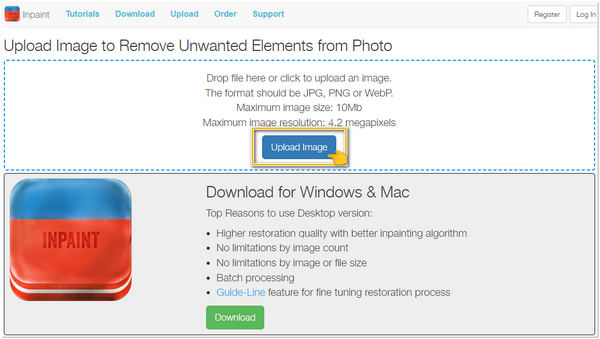Hey there! If you've ever browsed through Alamy's vast collection of stock photos, you might have noticed those pesky watermarks. They can be a bit of a distraction when you're trying to visualize how an image will fit into your project. Don't worry! In this post, we'll explore easy ways to remove the Alamy watermark, whether you have Photoshop or prefer to stick with free tools. Let’s dive in!
Understanding the Alamy Watermark

The Alamy watermark serves as a protective measure, ensuring that photographers' work remains credited and secure until you purchase the image. Think of it as a digital signature that helps maintain the integrity of the content. Here’s a quick breakdown of why it's important:
- Protects Copyright: The watermark helps prevent unauthorized use of images, protecting the rights of the creators.
- Encourages Purchase: By displaying a watermark, users are encouraged to buy the image for professional use, ensuring the photographer gets paid.
- Aesthetic Consideration: While watermarks can be distracting, they serve to remind users that the image isn't free to use without proper licensing.
When you see a watermark on an image, it's not just an annoying overlay; it’s a sign of the investment and effort put into creating that content. Understanding this context is crucial when considering how to handle images with watermarks.
But why are we so focused on removing them? Well, if you’re just looking for inspiration or planning a layout, a clean image can help you visualize better. However, I can’t stress enough the importance of respecting copyright laws and the hard work of photographers. Always consider purchasing the image if you plan to use it in any commercial capacity!
In the next sections of this post, we’ll discuss techniques for watermark removal, including both Photoshop methods and free alternatives. It's essential to weigh the options carefully, keeping in mind the ethical implications of using images for free without the proper permissions. Let’s get started!
Also Read This: Maximize Your Creative Projects with Alamy’s Image Library
3. Methods to Remove the Alamy Watermark

When it comes to removing watermarks from images, especially those pesky Alamy watermarks, there are several methods you can consider. Depending on your skills and the tools you have at hand, you can choose a method that suits you best. Let’s dive into a few effective options!
1. Online Tools
- Inpaint: This user-friendly online tool allows you to upload your image, mark the watermark, and let the software do the rest. It uses smart algorithms to fill in the space seamlessly.
- Watermark Remover: Another handy online alternative that works similarly to Inpaint. It’s quick and doesn’t require any downloads. Just upload your image and follow the prompts!
2. Mobile Apps
- TouchRetouch (iOS/Android): This app is perfect for quick fixes on the go. With an easy interface, you can simply brush over the watermark, and the app will intelligently remove it.
- Photo Retouch (iOS): Similar to TouchRetouch, this app provides tools for removing unwanted elements, including watermarks, with just a few taps.
3. Manual Techniques
- Clone Stamp Tool: For those familiar with photo editing, using the clone stamp tool in software like GIMP or Paint.NET can be effective. You simply select a section of the image to copy over the watermark.
- Healing Brush: This tool works similarly to the clone stamp but blends the texture, color, and brightness for a more natural look. It’s perfect for detailed work.
Each of these methods has its pros and cons, so choose based on your comfort level and the specific image needs. While online tools are quick and convenient, apps offer portability, and manual techniques give you more control over the final result. Happy editing!
Also Read This: Determining the Number of Photos Required for Consistent Earnings on Alamy
4. Removing the Watermark Using Photoshop

If you prefer a more advanced approach and have access to Photoshop, you’re in luck! Photoshop is a powerful tool that can effectively remove Alamy watermarks with precision. Here’s a step-by-step guide to help you navigate through the process:
Step 1: Open Your Image
Launch Photoshop and open the image containing the Alamy watermark. Navigate to File > Open and select your file. Once it’s open, you’re ready to start!
Step 2: Select the Watermark
Use the Rectangular Marquee Tool or the Lasso Tool to create a selection around the watermark. Try to be as precise as possible, but don’t worry if you overshoot a bit; we’ll refine it later.
Step 3: Use Content-Aware Fill
With the watermark selected, go to Edit > Fill and choose Content-Aware from the dropdown menu. Click OK, and Photoshop will analyze the surrounding pixels to fill in the area with similar textures and colors.
Step 4: Refine the Edit
If there’s any residual mark or the area looks unnatural, you can use the Clone Stamp Tool or the Healing Brush Tool to refine it further. Gently paint over any imperfections to blend it seamlessly.
Step 5: Save Your Work
Once you’re satisfied with the results, save your image by going to File > Save As. Choose your preferred format and give it a new name to ensure you keep the original intact.
And there you have it! With Photoshop, not only can you remove the Alamy watermark, but you can also enhance your image further if you wish. Just remember, always use images responsibly and respect copyright laws!
Also Read This: Alamy vs Shutterstock Which Stock Photo Platform Is Better
5. Alternative Methods for Watermark Removal
If you don’t have access to Photoshop or prefer not to use it, there are several alternative methods for watermark removal that can be just as effective. Let’s dive into some options that can help you achieve a clean image.
1. Online Watermark Removers
There are many online tools designed specifically for removing watermarks. Websites like Inpaint and Watermark Remover Online allow you to upload your image, highlight the watermark, and then let the software do the work. Here’s a quick guide on how to use them:
- Upload your image to the site.
- Select the area of the watermark.
- Click the button to remove the watermark.
- Download the edited image.
2. GIMP
If you’re looking for free software similar to Photoshop, GIMP (GNU Image Manipulation Program) is a fantastic choice. It’s packed with features and can handle watermark removal quite effectively. Here’s a simple way to go about it:
- Open your image in GIMP.
- Use the Clone Tool to paint over the watermark, selecting nearby areas to blend in.
- Adjust the layers and colors as necessary to make it look natural.
- Export the image once you’re satisfied with the result.
3. Mobile Apps
For those who prefer using a smartphone, there are several apps available that can help you remove watermarks easily. Look out for apps like Remove Watermark or Remove Watermark - Photo Eraser. The process typically involves:
- Loading the image from your photo library.
- Using a brush tool to highlight the watermark.
- Applying the removal feature and saving the new image.
While these methods can effectively remove watermarks, the quality of the final image can vary. Always experiment and see which method works best for your specific needs!
Also Read This: List of LinkedIn Remote Jobs Worldwide
6. Legal Considerations and Best Practices
Before diving into watermark removal, it’s essential to understand the legal implications involved. Watermarks are often used by photographers and artists to protect their work, and removing them without permission can lead to serious consequences. Here’s what you need to know:
Copyright Laws
Watermarked images are typically protected by copyright, meaning the creator retains exclusive rights to their work. Removing a watermark without obtaining permission can be considered copyright infringement. Always check the licensing agreements associated with any image you intend to use.
Seek Permissions
If you find an image that you love but it’s watermarked, consider reaching out to the creator for permission to use it. Many photographers are open to sharing their work if you credit them properly or provide a licensing fee.
Best Practices
- Use Licensed Images: Platforms like Shutterstock and iStock offer images with licensing agreements that allow you to use their content without worrying about legal issues.
- Credit Creators: If you use an image that doesn't have a watermark and is available for use, always give credit to the photographer to support their work.
- Educate Yourself: Familiarize yourself with copyright laws and best practices regarding image use and modification to avoid unintentional infringement.
In summary, while there are various methods to remove watermarks, always prioritize legal considerations and respect the rights of content creators. This way, you can use images confidently and ethically!
Also Read This: Alamy Affiliate Program: Earning Opportunities and Benefits for Promoting Alamy Images
7. Conclusion
In summary, removing the Alamy watermark can seem daunting, but with the right tools and techniques, it becomes a manageable task. Whether you choose to use Photoshop for precise edits or opt for user-friendly online tools, the key is understanding the capabilities of each option. For those who are familiar with Photoshop, the clone stamp and healing brush tools provide excellent results, allowing you to maintain the integrity of the image while removing unwanted elements.
If you're less experienced with design software, don't worry! Online tools like Inpaint or Fotor can simplify the process, enabling you to handle watermark removal quickly and efficiently. Just remember that whichever method you choose, respecting copyright and usage rights is paramount. Always ensure that you have the necessary permissions to alter or use images without watermarks.
Ultimately, the ease of removing a watermark depends on your skill level and the complexity of the image. With patience and practice, you can master these techniques and enjoy high-quality images without the distraction of watermarks. Happy editing!
8. Frequently Asked Questions
Q1: Is it legal to remove watermarks from images?
A: Generally, removing watermarks from images without permission is illegal and considered copyright infringement. Always make sure you have the rights to use and alter an image before proceeding.
Q2: Can I use free online tools to remove watermarks?
A: Yes! There are several free online tools available, such as Inpaint and Fotor, that can help you remove watermarks easily. However, their effectiveness may vary based on the complexity of the image.
Q3: What if I don't own the image?
A: If you don’t own the image, it’s best to seek permission from the owner or purchase the image without a watermark. Many stock photo sites offer this option, ensuring you're legally safe to use the image.
Q4: Will removing a watermark affect the image quality?
A: If done correctly, removing a watermark shouldn't significantly affect the overall quality of the image. However, if you’re not careful, it can lead to blurriness or distortions that detract from the image.
Q5: Are there any software alternatives to Photoshop for watermark removal?
A: Definitely! Alternatives like GIMP, Paint.NET, and Affinity Photo can also be used effectively for watermark removal. These programs offer various tools similar to Photoshop, often at a lower cost or even for free.
 admin
admin








